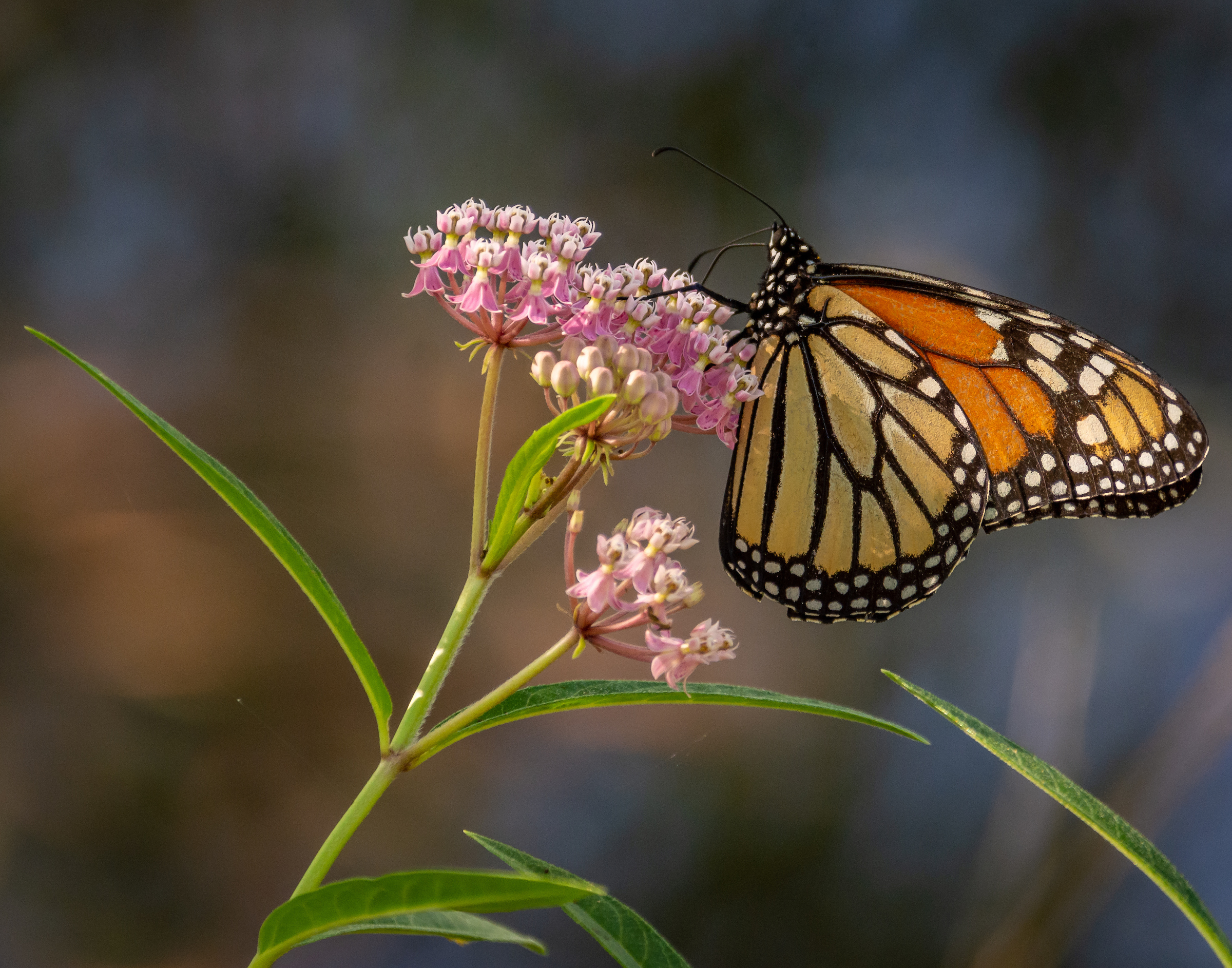Choosing to garden with native plants that benefit pollinators is increasing in popularity as home gardeners realize the outsized impact even a small number of these plants can have pollinators that call our region home. But how to do you maximize the benefit pollinators gain from visiting your garden?
One of the key ways is to have plants blooming for as much of the year as possible, potentially from late winter through late fall. The Garden’s home gardening team recommends the following top-performing native plants:

Ozark witch hazel, Hamamelis vernalis
This large, multistemmed shrub provides pollen and nectar to small flies, beetles, gnats, midges, and bees that venture out on relatively warm, sunny days. The foliage turns shades of yellow in fall.
Bloom time: February-March in the St. Louis area
Learn more on PlantFinder.

Golden Alexander, Zizia aurea
This member of the carrot family will attract a variety of pollinators with its clusters of small yellow flowers in spring. Though individual plants are short-lived, it will persist in the garden by self-sowing. This is a larval host plant to the black swallowtail butterfly.
Bloom time: May to June
Learn more on PlantFinder.

Red buckeye, Aesculus pavia
Welcome returning hummingbirds with this small, spring-blooming tree. The red, tubular flowers are attractive to hummingbirds and insect pollinators alike. Slow growing, but worth the wait.
Bloom time: April to May
Learn more on PlantFinder.

Dwarf blue false indigo, Baptisia australis var. minor
A shorter version of the more commonly available species, this native variety still features the same large spikes of purple-blue flowers in late spring to early summer. Large bees such as bumblebees are able to push open the flowers which evolved to exclude smaller pollinators.
Bloom time: May to June
Learn more on PlantFinder.

Swamp milkweed, Asclepias incarnata
Swamp milkweed is just one of several milkweed native species suitable for use in home gardens. They support the vulnerable monarch butterfly in every stage of life, from a larval host plant to a nectar source for adults. If your garden has a sunny, moist location, consider giving this, clump-forming, pink-flowering milkweed a try.
Bloom time: July to August
Learn more on PlantFinder.

Buttonbush, Cephalanthus occidentalis
This native shrub prefers sunny, moist situations, but will adapt to a range of soil conditions. The round clusters of white blooms have a unique appearance and bloom at a time when many other shrubs do not, attracting bees, butterflies, and other insect pollinators.
Bloom time: June
Learn more on Plantfinder.

Purple prairie clover, Dalea purpurea
A true pollinator magnet of summer. This prairie species grows quickly and produces a showy display of bottlebrush-like flowerheads made up of small, purple flowers. Unfortunately, it is also popular with rabbits and deer. Use fencing and repellants to keep them away until young plants get established.
Bloom time: June to August
Learn more on Plantfinder.

Blue stem goldenrod, solidago caesia
This clump-forming, part-shade tolerant goldenrod is not as aggressive as other goldenrods. Small clusters of yellow blooms are held on arching stems from late summer into fall.
Bloom time: August to September
Learn more on PlantFinder.

Aromatic aster, symphyotrichum oblongifolium
An excellent late-season source of nectar and pollen for a wide variety of insect pollinators. The long-lasting display of lavender-blue flowers can extend into November.
Bloom Time: September to November.
Learn more on PlantFinder.

Native Gardening Basics
Have your new favorites picked out and ready to get planting? The Missouri Botanical Garden’s home gardening team has a few basic tips to help you get started?
- Where can I buy native plants? Grow Native! is a fantastic source of information about plants native to the Lower Midwest and where to buy them
- When can I plant native plants? Spring and fall are both excellent times to plant native plants.
- Where should I plant native plants? The key to success with any plant is Right plant, right place. Be sure the sun, soil type, and soil moisture conditions match the growing requirements of the desired species.
- Is sun or shade best for these native plants? From this list, the only truly shade-tolerant species here are golden Alexanders and blue stem goldenrod. The rest prefer a sunnier spot.
- How much water do native plants need? Keep plants watered well for the first month after planting, then water deeply and infrequently as needed after that if the soil dries.
After the first year, most properly-sited native plants will only require supplemental irrigation during periods of extreme drought. - When will I see blooms? Be patient. Many native plants will grow slowly for a few years before really reaching their stride.
Justine Kandra, Horticulturist

Leave a Reply